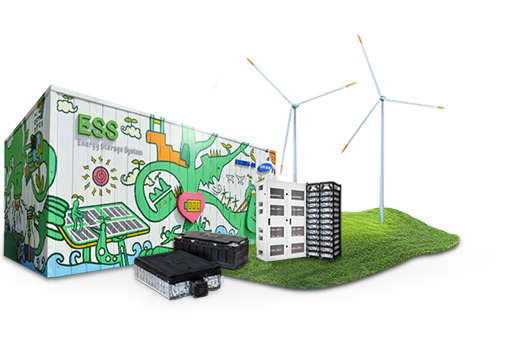Korean ESS companies ramp up overseas business eyeing 40% revenue hikes
By Aug 31, 2020 (Gmt+09:00)
LG Chem to sell water filter business to Glenwood PE for $692 million


KT&G eyes overseas M&A after rejecting activist fund's offer


Mirae Asset to be named Korea Post’s core real estate fund operator


StockX in merger talks with Naver’s online reseller Kream


Meritz backs half of ex-manager’s $210 mn hedge fund


In 2020, the two companies are likely to see their overseas ESS revenue expand by 20-40% each from 2019, according to sources from the energy industry on August 31.
Samsung SDI has become a supplier for an ESS facility in central Ireland, a joint project under way between Korea’s Hanwha Energy Corporation and Ireland’s Lumcloom Energy, to build two plants holding a combined 200MW capacity.
Hanwha Energy is in charge of engineering, procurement and construction, in addition to being a stake investor in the 147 billion won ($123.8 million) project, the largest of its kind in Europe.
Meanwhile, LG Chem also recently hit the jackpot with its ESS business in the US. The company is preparing to provide 1GW worth of products to an ESS facility project led by a US-based plant, accounting for almost 10% of the world's total ESS demand of 9.8GW as of 2019.
In July, the company also supplied a 10MW ESS to Lincoln Gap Wind Farm, a large renewable energy generator in Australia.
The ESS sector is growing in sync with renewable energy. ESS is used to stabilize renewable energy, which is greatly affected by the weather and often highly volatile. Energy companies will store energy in ESS and distribute supplies depending on demand. ESS is also used to regulate frequency according to each country's standard.
ESS is more cost competitive than traditional power as it secures energy without production costs. Also, it addresses the duck curve, a side effect caused by increased use of renewable energy. A duck curve occurs when there is an imbalance between demand and supply for energy given that renewable energy is affected by time changes, weather, and other factors.
For these reasons ESS has earned the reputation of being the cream of the crop in the renewable energy industry.

TURBULENT DOMESTIC MARKET
Despite Korean ESS companies' triumph overseas, the situation is quite different in Korea. Domestic orders have plunged in the wake of a feud between the Korean government and ESS companies over who should take responsibility for ESS-related fires in 2019.
The domestic ESS market size shrunk from 5.6GWh in 2018 to 3.7GWh in 2019 while the global market increased by nearly 40%. Also last year, Korean companies' global ESS market shares dropped from 70% to 60%.
Samsung SDI, a chief vendor in the global ESS market, also remains vulnerable due to its recent drop in market share . In 2019, the company accounted for 29% in global ESS market share, marking the company's first dip below 30% in three years.
Chinese companies are trailing closely behind. Earlier this year, China-based ESS company BYD announced that it would increase ESS shipments tenfold.
"Chinese companies such as Contemporary Amperex Technology Co., and BYD are expected to foray into the ESS market backed by capital they accumulated from the secondary battery business," said a source from the battery industry.
Korean companies are determined to maintain their lead by concentrating on overseas markets.
“We plan to increase the portion of our overseas market revenue to 80-90% in coming years,” said a source from Samsung SDI, adding that the goal is for overseas revenue to exceed 70% this year. LG Chem has also shifted its ESS focus primarily to the overseas market.

OVERSEAS MARKETS: HUGE GROWTH POTENTIAL
The two domestic ESS providers' first target is North America, driven by the US government’s expansion of renewable energy policies to boost the economy amid the global coronavirus. The US ESS market is expected to grow by 191% in 2021 compared to this year. Also, the US Energy Storage Association is aiming to deploy 100 GW of ESS by 2030 -- all heralding a promising outlook for the ESS market.
The aggressive ESS policy coupled with the trade conflict between the US and China is expected to prompt US companies to purchase Korean ESS.
"The ESS industry is similar to the semiconductor memory industry in the sense that the demand is immediately reflected into the price," said Kim Chuljoong, an analyst at Mirae Asset Daewoo Co. "Korean companies are likely to benefit from demand for global ESS exceeding supply in the next few years," he explained.
The global ESS market is showing a solid growth curve. Renewable energy in Ireland accounts for 38% in 2020, almost double from 16% in 2010. California, the world's largest ESS market as an active proponent of clean energy, is planning to double its renewable energy and ESS market by 2030, to nearly triple the value of the current ESS market in the US.
Europe is also an attractive market with high growth potential. In July, the European Union announced a policy to foster renewable energy worth 75 billion Euro ($88 billion).
Write to Su-bin Lee at lsb@hankyung.com
Danbee Lee edited this article
-
 Real estateMirae Asset to be named Korea Post’s core real estate fund operator
Real estateMirae Asset to be named Korea Post’s core real estate fund operatorApr 29, 2025 (Gmt+09:00)
-
 Asset managementMirae Asset bets on China as Korean investors’ US focus draws concern
Asset managementMirae Asset bets on China as Korean investors’ US focus draws concernApr 27, 2025 (Gmt+09:00)
-
 Alternative investmentsMeritz backs half of ex-manager’s $210 mn hedge fund
Alternative investmentsMeritz backs half of ex-manager’s $210 mn hedge fundApr 23, 2025 (Gmt+09:00)
-
 Real estateRitz-Carlton to return to Seoul, tapped by IGIS Asset for landmark project
Real estateRitz-Carlton to return to Seoul, tapped by IGIS Asset for landmark projectApr 22, 2025 (Gmt+09:00)
-
 Real estateS.Korean gaming giant Netmarble eyes headquarters building sale
Real estateS.Korean gaming giant Netmarble eyes headquarters building saleApr 18, 2025 (Gmt+09:00)


